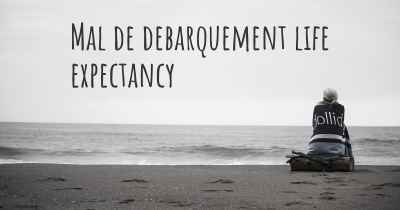Is it advisable to do exercise when affected by Mal de debarquement? Which activities would you suggest and how intense should they be?
See if it is advisable for people with Mal de debarquement to practice sports and which ones are the most recommended if you have Mal de debarquement

Exercise Recommendations for Mal de Debarquement
Mal de Debarquement (MdD), also known as disembarkment syndrome, is a condition characterized by a persistent sensation of rocking or swaying after being on a boat, plane, or other motion-triggering activities. It can be quite debilitating and affect a person's daily life. While there is no specific cure for MdD, exercise can play a crucial role in managing the symptoms and improving overall well-being.
Benefits of Exercise for MdD
Engaging in regular exercise can have several benefits for individuals with MdD:
- Improved balance and coordination: Certain exercises can help strengthen the muscles involved in balance and coordination, which can alleviate the sensation of rocking or swaying.
- Reduced anxiety and depression: Exercise has been shown to boost mood and reduce symptoms of anxiety and depression, which are commonly associated with MdD.
- Enhanced cardiovascular health: Engaging in aerobic exercises can improve cardiovascular fitness, leading to better overall health and stamina.
- Increased energy levels: Regular physical activity can help combat fatigue, a common symptom experienced by individuals with MdD.
Recommended Exercises
When it comes to exercise for MdD, it is important to choose activities that do not exacerbate symptoms and are gentle on the body. Here are some recommended exercises:
- Walking: Walking is a low-impact exercise that can be easily incorporated into daily routine. Start with shorter walks and gradually increase the duration as tolerated.
- Yoga: Yoga focuses on gentle movements, stretching, and breathing exercises, which can help improve balance, flexibility, and relaxation. Avoid poses that involve rapid head movements or inversions.
- Tai Chi: Tai Chi is a slow and flowing martial art that promotes balance, body awareness, and relaxation. It can be particularly beneficial for individuals with MdD.
- Swimming: Swimming in calm waters can provide a sense of weightlessness and help alleviate symptoms. Start with shorter swimming sessions and gradually increase the duration.
- Pilates: Pilates focuses on core strength, stability, and controlled movements. It can help improve posture and body awareness, which may be beneficial for individuals with MdD.
- Cycling: Cycling on a stationary bike or outdoors on smooth terrain can be a good option for individuals with MdD. Start with shorter sessions and gradually increase the intensity.
Exercise Intensity
The intensity of exercise for MdD should be tailored to individual capabilities and tolerance levels. It is important to start slowly and gradually increase the intensity as symptoms allow. Listen to your body and avoid pushing yourself too hard, as it may worsen symptoms.
It is advisable to consult with a healthcare professional, such as a physical therapist or physician, before starting any exercise program, especially if you have underlying health conditions or concerns.
Additional Tips
In addition to exercise, there are some other tips that can help manage MdD:
- Stay hydrated: Dehydration can worsen symptoms, so it is important to drink an adequate amount of water throughout the day.
- Avoid triggers: Identify and avoid activities or environments that trigger or worsen MdD symptoms, such as excessive visual stimulation or prolonged exposure to motion.
- Practice relaxation techniques: Techniques like deep breathing, meditation, and progressive muscle relaxation can help reduce anxiety and promote relaxation.
- Get enough rest: Fatigue can exacerbate symptoms, so ensure you are getting enough quality sleep and rest.
Remember, everyone's experience with MdD is unique, and what works for one person may not work for another. It is essential to listen to your body, be patient, and make adjustments as needed.








